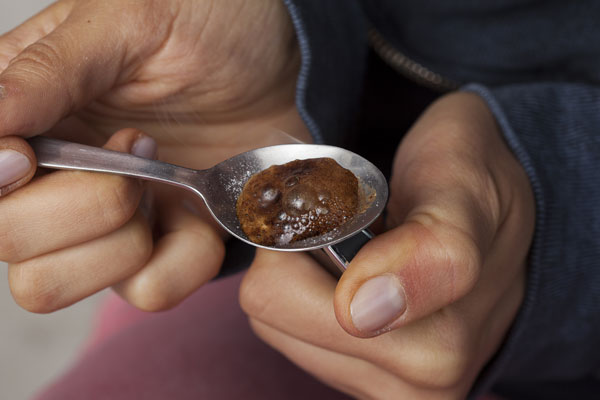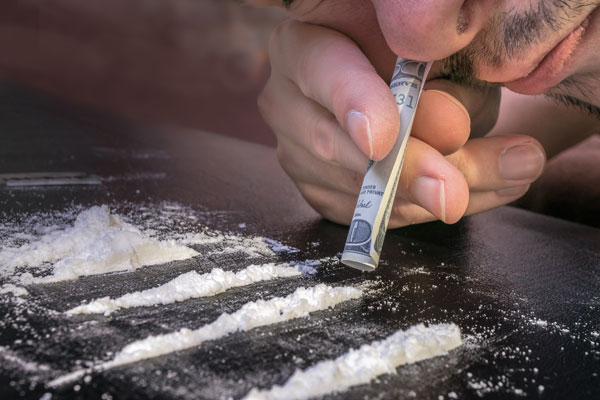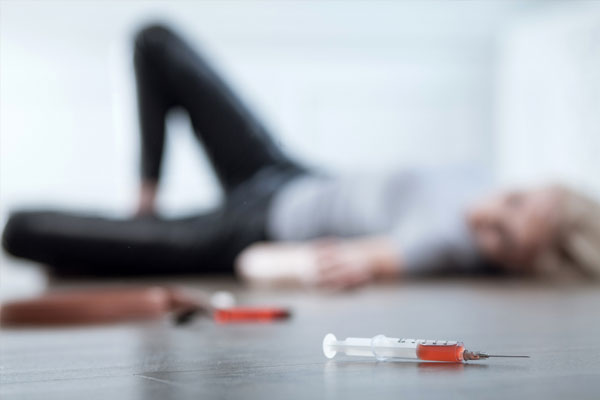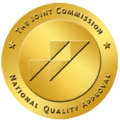HELP US BETTER MEET YOUR NEEDS BY TELLING US A LITTLE MORE ABOUT YOURSELF
Heroin Detox
Heroin, also known as diamorphine among other names, is an opiate typically used as a recreational drug for its euphoric effects. It is an opioid drug made from morphine, a natural substance from the seed pod of the Asian opium poppy plant. On the street heroin may come as a white or brown powder. It can also come as a black sticky substance often referred to as black tar heroin. Heroin enters the brain rapidly and changes back into morphine. It binds to opioid receptors on cells located in many areas of the brain, especially those involved in feelings of pain and pleasure. Research suggests that the abuse or misuse of prescription opioid pain medication magnifies the risk of an individual using heroin, and the current opiate epidemic in America seems to thoroughly support these claims.
Is Heroin a Medicine
Because it is a form of morphine it is occasionally used medically to relieve pain, however it is not accepted for medical use in the United States.
FACT – German drug company Bayer marketed diacetylmorphine as an over-the-counter cough suppressant drug with the trademark name Heroin.
Diamorphine is produced from acetylation of morphine derived from natural opium sources. Numerous mechanical and chemical means are used to purify the final product. The final products have a different appearance depending on purity, which also means different names.
For example, the original trade name of “heroin” is typically for non-medical settings. This and other street names are consistent with recreational use. Heroin is prescribed as a strong pain medication in some countries around the world, including the United Kingdom under the name of diamorphine.




Read the Report from American Society of Addiction Medicine
Method of Heroin Administration
The time it takes for heroin’s effects to kick-in depends upon the method of administration. Studies show that the euphoric feeling of drug use is proportional to the rate at which the presence of the drug in the blood increases. With higher doses of heroin used and the faster the route of administration, the higher the potential for psychological addiction. Heroin can be consumed in various ways. Some of the more common methods include:
Oral
Injection
Also known as “slamming”, “banging”, “shooting up” or “mainlining”. Injection is a distinctive recreational method which carries fairly greater hazards than other methods of administration. This is probably the most well-known use of the drug, but it is not the only method of administration. Injection is known to be the quickest way to experience the effect of large doses with an immediate rush, but it is also the method with the most risks associated with it.
Some of these hazards include collapsing veins, deep vein thrombosis in certain veins, and blood-borne diseases such as HIV or hepatitis. Infection can also create other serious or lethal issues. Intravenous use can lead to abscesses and even decreased kidney functions.
Snorted
Snorting, or insufflation, is another popular method of heroin administration. The drug is crushed into powder and inhaled, typically through a straw. The drug is absorbed through the mucous membrane soft tissue and straight into the bloodstream.
This method is still quicker than oral administration, but not as instant as injection. Snorting heroin is also some users preference because it avoids the use of needles and stigma associated with track-marks from injection. Snorting heroin can cause respiratory complications, lung and intestinal damage, and a high risk of overdose. It also damages the mucous membranes and makes them more susceptible to infection.
FACT– A report from the Centers for Disease Control and Prevention (CDC) estimates that snorting of heroin alone causes over 60% of overdose.
Smoking
Smoking heroin refers to vaporizing it to inhale the fumes. It is commonly smoked in glass pipes of using tin foil. Again, for many the appeal of smoking heroin is to avoid needles and the risks of injection, but it does not make the drug any safer to use.
According to the National Institute on Drug Abuse (NIDA), smoking heroin can damage the lungs and increase the risk of respiratory diseases, including pneumonia and bronchitis. Smoking heroin may also hurt other organs, including the brain, heart, liver and kidneys.
FACT– Despite not being injected, smoking heroin can also cause collapsed veins and clogged blood vessels.


Side-Effects of Heroin Use
Like other opioids, chronic use of heroin has shown to be a potential cause of various health problems, such as hyponatremia, along with physical dependence and often debilitating addiction.
After extended use of heroin the short-term euphoric effects are surpassed by several undesirable side-effects. Frequently, this occurs because the body develops a tolerance to heroin and takes action to counterbalance the effects.
Short-Term Side-Effects
- Nausea
- Vomiting
- Fatigue
- Confusion
- Dry mouth
- Itchy skin
- Constricted pupils
- Light sensitivity
- Lower than normal body temperature
- Slowed respiration
- Slowed heart rate
Long-Term Side-Effects
- Decreased dental health/ damaged teeth/ swollen gums
- Upbraided skin from scratching
- Severe constipation
- Weakness
- Sedation
- Poor appetite
- Malnutrition
- Sleeping problems
- Decrease in sexual functioning
- Increased vulnerability to disease from diminished immune system
- Impaired brain function due to lack of oxygen
- Liver damage
- Kidney damage
Mental Health Side-Effects
Because heroin impacts the physical structures of the brain, mental health concerns can be encountered with continued use. They include:
- Depression
- Social isolation
- Impaired memory
- Anxiety
- Dependency and addiction
- Suicidal ideation
Heroin Overdose and Death
The risk of heroin overdose and even death qualifies for both short-term and long-term use. This is because dosing is frequently impossible to measure due to difference in purity. Thus, heroin is never a safe. First time users overdose, the same for experienced users.
Many complications and side-effects are only magnified by the use of other substances with heroin, especially other depressants like alcohol or sedatives.

Heroin Statistics
According to the CDC– In 2015, over 12,989 people died of heroin overdoses in the U.S.

Heroin-related overdose deaths more than quadrupled since 2010, according to the CDC.


Source for the Above Statistics
Overdose Warning Signs
- Pinpoint pupils
- Disorientation
- Delirium
- Extreme drowsiness
- Bluish nails or lips
- Dry mouth
- Constipation
- Stomach or intestine spasms
- Uncontrolled muscle movements
- Slow or erratic heartbeat
- Low blood pressure
- Depressed breathing
- Choking sounds
- Vomiting
- Weak pulse
- Repeated loss of consciousness
- Coma
Heroin Withdrawal Symptoms
Heroin withdrawal will not be the same universally. Some will experience the stage of withdrawal with different intensity over different periods of time. Some factors will also determine how one experiences withdrawal, such as:
- Length of time using
- Method of heroin administration
- The dosage and frequency of using
These aspects of heroin use will impact how dependent the brain and body have become. The intensity and duration of the withdrawal period will be determined by the dependence.
Due to the impact of powerful opioid drugs like heroin on the functions of the central nervous system, along with binding to receptors in the brain and manipulating chemical activity, withdrawal symptoms will range parallel to how much the brain relies on heroin and how much of the chemical structure of the brain has been altered by using heroin.

Mild Heroin Withdrawal
- Nausea
- Abdominal cramps
- Tearing
- Sweats
- Chills
- Persistent yawning
- Muscle and bone aches
Moderate Heroin Withdrawal
• Vomiting
• Diarrhea
• Agitation
• Restlessness
• Tremors
• Trouble concentrating
• Goose bumps
• Fatigue
Severe Heroin Withdrawal
• Anxiety
• Insomnia
• Depression
• Hypertension
• Rapid heart rate
• Muscle spasms
• Impaired respiration
• Difficulty feeling pleasure
• Drug cravings
NEED HELP IMMEDIATELY
Call
1-888-934-7256
Medical Detox for Heroin
Because heroin is such a short-acting opiate not only does it take effect quickly, but the drug also leaves the bloodstream quickly. Heroin withdrawal symptoms are estimated to begin somewhere between 6 and 12 hours of the last use. These symptoms typically peak within 2 to 3 days, and usually last 5 to 10 days. Still, the level of dependency will impact the length of time of detoxing.
Due to the great discomfort that can be caused by heroin withdrawal, along with the psychological strain, heroin should never be suddenly discontinued without the support or medical and mental health professionals. Managing the side-effects of heroin addiction can do all the difference for early stages of addiction recovery.
Medical detox is typically the most safe, effective and comfortable strategy for stopping heroin use, especially for long-term users. Beyond monitoring important health factors like heart rate, breathing, temperature and blood pressure levels, medical detox can also provide any necessary medications to ease the transition. Also, a safe medical detox from heroin will be able to assess and address other mental health or physical health issues while the individual has a secure and supported environment to heal.
Palm Healthcare Company
1177 George Bush Blvd.
Delray Beach, FL 33483
888-934-7256
Joint Commission accreditation and certification is recognized nationwide as a symbol of quality that reflects an organization’s commitment to meeting certain performance standards.



